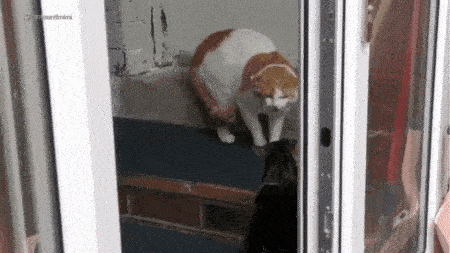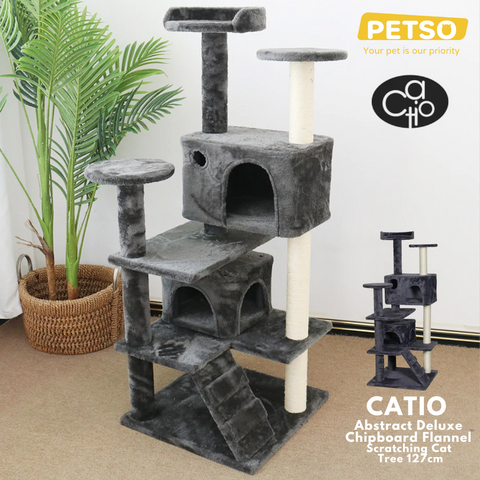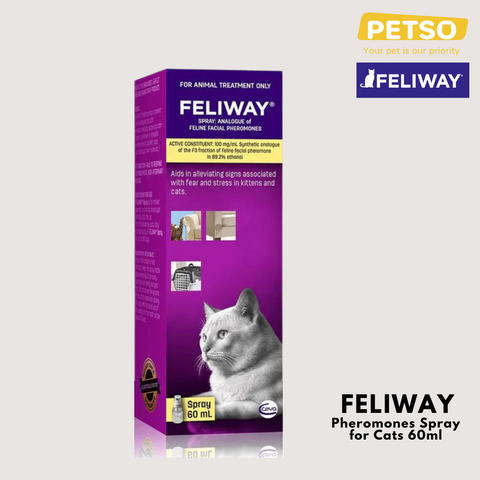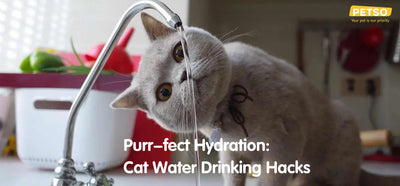It is not surprising that some pet lovers prefer cats over dogs and for some, having more than one cat as a pet means more companionship. However, it also allows the possibility of having multi-cat household issues which means more chaos, discord, anxiety, bullying and fighting among each other, triggering indiscriminate defecation, strong stress reactions and so on. These can lead to psychological and physical illnesses in cats. Therefore, pet owners must take note first that behavioural changes such as aggression, hiding, changes in appetite, etc. may indicate a health problem rather than a simple one, so take your cat for a veterinary check-up first. When everything seems to be fine with your cat/s healthwise it would be prudent to take the necessary steps how to reduce tension between cats to ensure they live in harmony with each other.
"Pet owners must take note first that behavioural changes such as aggression, hiding, changes in appetite, etc. may indicate a health problem rather than a simple one, so take your cat for a veterinary check-up first. When everything seems to be fine with your cat/s healthwise it would be prudent to take the necessary steps to reduce tension between cats to ensure they live in harmony".

(credits to: TomandMimi YT Channel)
Why do cats fight with each other?
There are 3 main factors why cats fight with each other, these would be territory, aggression and rough play. The bottom line is cats are typically individualistic animals, they do not live in packs and don’t necessarily enjoy each other's company. As the saying goes there is always an exception to the rule especially if you understand that more cats for you means more companionship and satisfaction for you and your pets and there are ways you can actually achieve cat harmony and make cats co-exists with one another or in groups.
"There are 3 main factors why cats fight with each other, these would be territory, aggression and rough play. The bottom line is cats are typically individualistic animals, they do not live in packs and don’t necessarily enjoy each other's company."

(image courtesy of the Spruce Pets)
Here are ways you could prevent aggression among cats and make themselves get along with each other:
1. Learn about the social factions among cats
A cat's social affiliation depends on how many cats there are in the house and it is likely that there is more than one social group a single cat would belong to. The key here is watching and observing them closely, which cat can live in close proximity to others, grooming each other, playing together and greeting each other via nose-to-nose contact.

Once you have established data on this, you would already know which ones can live in groups and which ones prefer to be alone. Then you can already establish an area in your house wherein there would be a designated area for those who can live in groups and an area for those who prefer to be solo. For those cats who love to go solo, you can assign one area for all of them, say there are 3 cats who love to be solitary, one room or area would be allocated for them, the trick is never to group their stuff close to each other like their feed bowls should never be placed close to each other but ensure there is a safe distance from one another.
2. Balanced allocation of resources
Cats typically do not like sharing resources, from food bowls, drinking bowls, litter trays, beds, etc. Providing them with adequate resources would ensure better harmony and avoid tension or conflicts. For example, for every 3 cats, there should be an equal no. of resources plus one extra and should be placed in areas or at a distance wherein no conflicts or fights ever happen and thereby, the dangers of living with multiple cats are prevented.
"Providing them with adequate resources would ensure better harmony and avoid tension or conflicts. For example, for every 3 cats, there should be an equal no. of resources plus one extra and should be placed in areas or at a distance wherein no conflicts or fights ever happen and thereby, the dangers of living with multiple cats are prevented."

3. Feeding and Drinking Points
As mentioned earlier regarding resources not being placed close to each other, it is important that one bowl for feeding and another bowl for drinking should be provided for each cat. Feeding and drinking points should be identified and the technique here is to position both the feed and drink bowls in an area that is spacious to allow the cat to face in any direction to be able to scan for any approaching fellow feline.
4. Provision of Litter Trays/Box
Cats defecate wherever they feel they are secure, do not position the litter trays on the passageways, near windows or it should be away from noisy home appliances, in short, never place them in busy areas. As said earlier, providing one litter tray for each is wise. Using the N+1 rule is highly recommended, the number of cats you own, plus one extra litter box/tray. Based on studies, multi-cat households prefer to use these open-top cat litter trays because it gives them a complete view of their surroundings and they feel at ease. Check out these best litter boxes for multiple cats and take your pick on any of these interesting items.
5. Furnishing your home with cat furniture
Providing cat climbing frames, scratching boards, cat towers and trees are some of the attractive cat furniture you can get to avoid conflict among your pet cats. Choosing a piece of quality cat furniture made could be overwhelming but bear in mind that it is advisable to have several of these cat furniture (best if you could buy various types) so you do not ever put your cat in a situation where it must fight, defend or be frightened to use these resources.

"Choosing a piece of quality cat furniture made could be overwhelming but bear in mind that it is advisable to have several of these cat furniture (best if you could buy various types) so you do not ever put your cat in a situation where it must fight, defend or be frightened to use these resources."
6. Proper introduction of a new cat into your home
The point of introducing a new cat into a home is not to integrate the new cat into the family as quickly as possible, but to take a step-by-step approach to minimise stress, fear and threatening concerns between cats. The new cat is entering a completely new territory, will get to know people and animals he has never met, has no scent of his own, everything is unfamiliar and is definitely worried about being attacked. The first step would be to separate the new one from the rest, how to do this? You can perhaps get or install a cat enclosure or a pet metal gate fence. For pet parents, they might think are cat enclosures cruel? doing this would mean allowing the new one and the group have visual contact first. Providing a metal gate fence as a separator will be a great help to achieve this. It also gives them chance for them to see each other, sniff each other and touch noses but not go through as this is or should be an escape-proof cat enclosure. This way each other’s scents are being swapped and as time goes by they will be able to get familiarised with each other.

7. Increase vertical space
One of the best ways to expand your cat's territorial space in a multi-cat household is to move up to vertical heights, as cats see the world in vertical dimensions. Adding cat window hammocks, cat climbing frames, elevated cat beds, cat shelves, cat stairs, windowsill perches or cat window beds and more can multiply or even double each cat's territorial space. Multi-level perches are a great way to allow multiple cats to share window space while keeping enough distance without being next to each other; staggered cat shelves allow cats to choose the height they want to go, and if properly set up, cats can easily jump up and down without having to meet each other.

|
 |
8. Provide hiding space
Cats like to rest, chill and be free from disturbance or even danger, while others like to hide and be invisible. For those timid and fearful cats, providing them with hiding spaces is especially important and will make them feel that the environment is safe. Hiding places can be open boxes, covered cat beds, cat beds, tunnels, or raised cat beds for cats even open airline boxes and cat litter box with lid.

|
 |
9. Enriching the environment
Cats are naturally inclined to walk around and hunt; when they have nothing to do, they turn on the world chaos button. It is therefore important to provide play activities to prevent cats from getting bored, to distract them from finding each other and to create more enjoyment in their lives. Environmental enrichment includes interactive toys, and unique cat toys for some alone play time, safety (e.g. where resources are placed), good nutrition, medical care, and interaction with the owner. You can also choose to buy electronic interactive cat toys and cat teaser toys so that your cat will not get bored even if the owner is not home.
These are some of the best interactive toys for cats.

|
 |
 |
10. Don't punish your cat
Never punish cats if they are fighting with each other. Any form of punishment including shouting at the cat, spraying water at the cat, spanking the cat or confinement will only escalate the cat's dislike of each other and will also cause the cat to fear you. Another side effect of punishment is that the punished cat will want to vent and will likely transfer its anger to another cat. Instead of punishing your cat, be a cat detective and find out the root cause in order to change your cat for the better. You can also opt to give them a cat diffuser or synthetic cat pheromone spray and plug-in pheromone cat diffusers as it helps reduce tension among cats.

|
 |
11. Training and behaviour modification
Using behaviour modification techniques can help reduce tension between multiple cats. Start by finding the root cause of the problem and create a behavioural adjustment plan. The plan will cover the suggestions mentioned above, including resource allocation and environmental enrichment, but also you can opt to throw in cat treats when they are around each other so your cat will associate being around each other with a delightful experience. For those more serious cases, it will be necessary to separate the cats completely, treat them as if they have never met before and reintroduce them to each other from the beginning.
"Using behaviour modification techniques can help reduce tension between multiple cats. Start by finding the root cause of the problem and create a behavioural adjustment plan. The plan will cover the suggestions mentioned above, including resource allocation and environmental enrichment, but also you can opt to throw in cat treats when they are around each other so your cat will associate being around each other as a delightful experience."
Choosing to have a multicat household is the choice of the cat parent, as long as you have the willingness to learn the right ways how to make them co-exist with each other, the amount of joy they bring to you is beyond measurable. Make sure to spend an equal amount of time with each pet cat, combined with patience, following these tips will make them live in harmony with each other.









